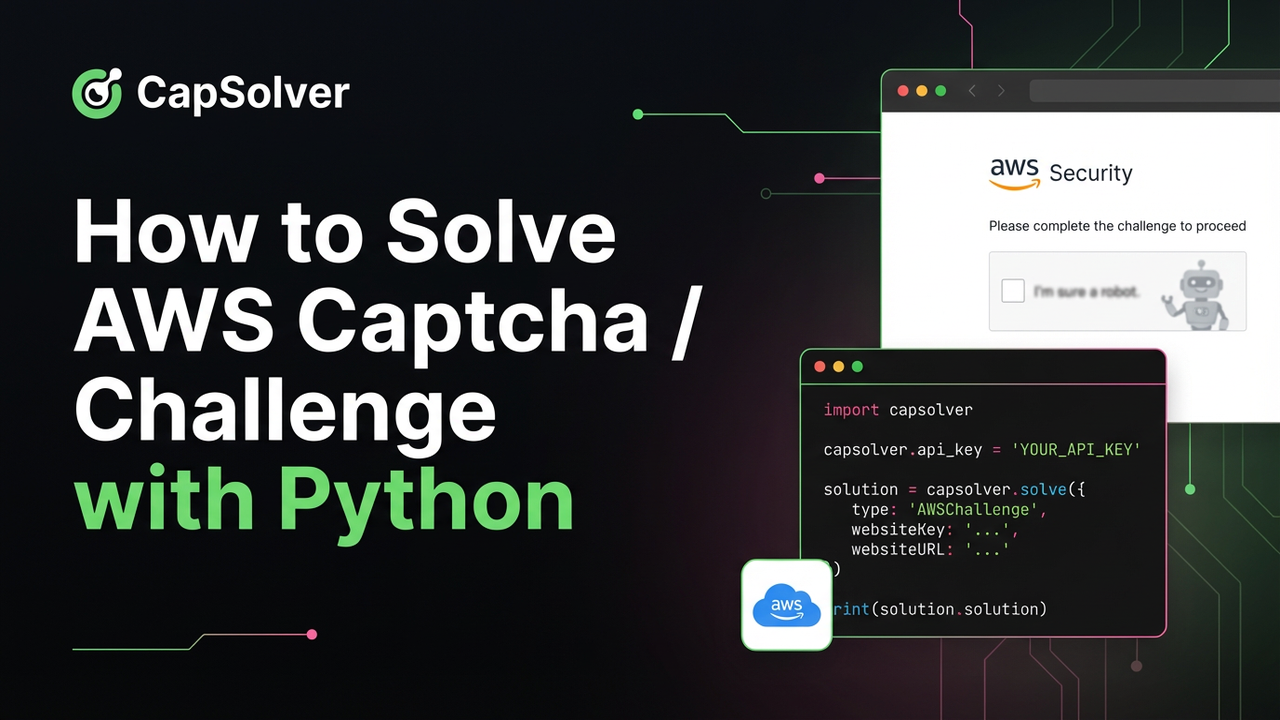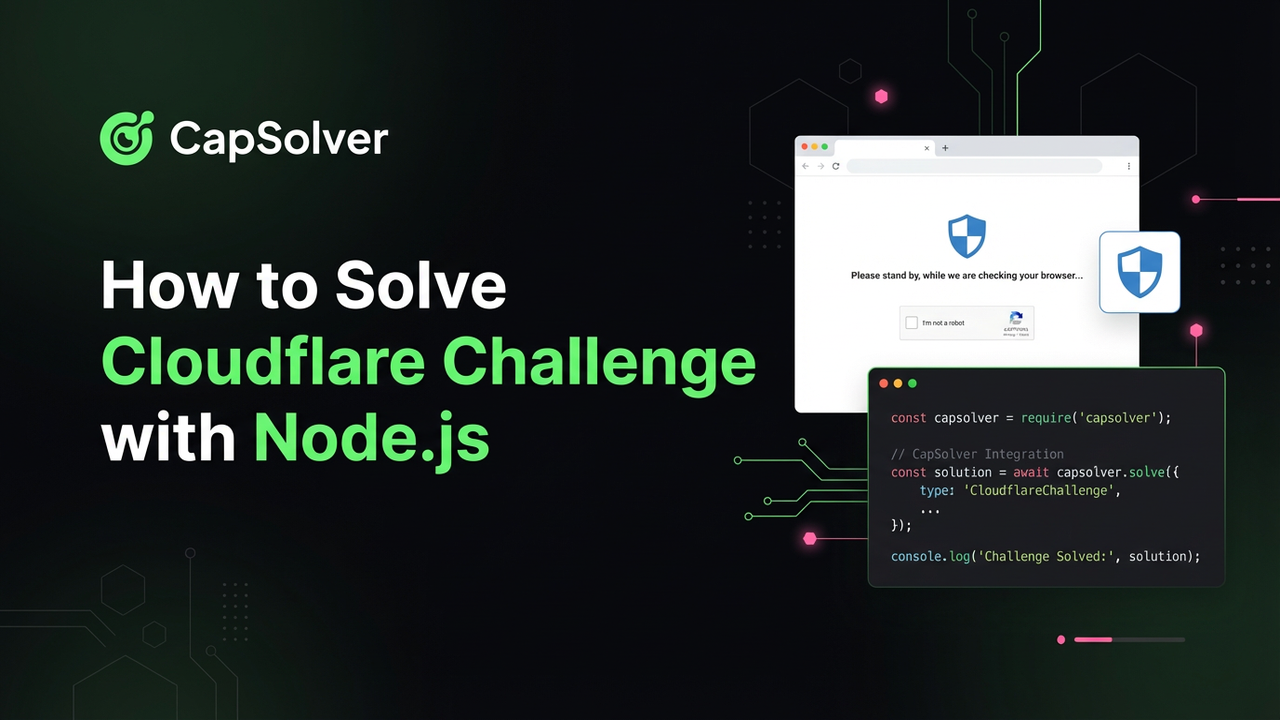Web Scraping With Python: 2024 Best Tactics

Lucas Mitchell
Automation Engineer
15-Mar-2024

Are you grappling with the complexities of extracting data from modern websites? You're not alone. Websites are becoming increasingly sophisticated, employing dynamic content, user-driven interactivity, and robust defense mechanisms.In this article, we'll explore some of the best tactics for web scraping with Python in 2024.
Tactic #1: Conquering Dynamic Web Pages and Content: JS Rendering
Dynamic web pages load content asynchronously, updating elements in real-time without requiring a full page reload. This dynamism poses a formidable challenge for web scrapers, as the desired content may not be readily available in the initial HTML source. The webpage can send requests to a server and receive data in the background while you continue to interact with its visible elements. Facilitated by JavaScript, the page fetches and updates specific parts based on user actions.
To conquer this challenge, utilize libraries like Selenium or Puppeteer to render JS content in a headless browser. By doing so, you can access the fully rendered HTML and scrape the desired data seamlessly.
Tactic #2: Navigating Authentication Barriers
Many platforms, especially those hosting user data, implement authentication to regulate access. Successfully navigating the authentication process is crucial to extract data from such websites.
While some sites employ straightforward authentication methods, others may implement multifactor authentication, such as CSRF (Cross-Site Request Forgery) tokens, complicating the login process.
For basic websites, you can identify the login request, mimic it in your scraper using a POST request, and store it in a session to access the data behind the login page. However, more complex websites require advanced tactics, such as setting up additional payload and headers alongside your login credentials.
Tactic #3: Leveraging CAPTCHA Solving
As an additional security measure, websites often implement CAPTCHAs to verify that the user is human and not an automated bot. Solving CAPTCHAs programmatically is a critical aspect of advanced web scraping in Python.
Incorporating a reliable CAPTCHA solving service like CapSolver into your web scraping workflow can streamline the process of solving these challenges. CAPSolver provides APIs and tools to programmatically solve various types of CAPTCHAs, enabling seamless integration with your Python scripts.
By leveraging CAPSolver's advanced CAPTCHA solving capabilities, you can overcome these hurdles and ensure successful data extraction, even from websites with robust security measures.
Tactic #4: Hidden Trap Avoidance
Some websites intentionally employ hidden traps, such as fake links or decoy data, to thwart scrapers. To avoid falling into these traps, implement robust error handling and data validation mechanisms in your scraping scripts. Additionally, utilize techniques like link analysis and content comparison to identify hidden traps effectively.
Tactic #5: Emulating Human-like Behavior
Blending in with human-like behavior is a crucial tactic to evade detection mechanisms. Although headless browsers enable you to simulate user behavior, systems can still detect automated interactions like mouse movements, click patterns, scrolling, and more. Hence, there is a need for an advanced web scraping Python tactic to truly emulate human behavior.
Achieving this level of emulation often requires custom scripts or the use of advanced scraping libraries that allow for the integration of human-like behavior. This can include mimicking mouse movements, emulating scrolling behavior, and introducing delays between requests to simulate the irregular way or pace of human browsing.
Tactic #6: Masking Automated Indicators
Websites often employ detection mechanisms to identify automated scraping activities based on IP addresses, request patterns, and other indicators. To mask these automated indicators, utilize proxy rotation, IP rotation, and request throttling techniques. By diversifying IP addresses and request patterns, you can evade detection and scrape data without interference.
Tactic #7: Resource for Saving Costs
Optimizing resource usage is not only about efficiency but can also be a strategy to save costs, especially when dealing with large-scale projects. This typically involves selectively preventing the loading of unnecessary resources during the scraping process.
Doing so can conserve bandwidth, reduce processing time, and save money, mainly when resource-intensive elements are optional. For example, solving resources like images and scripts when using Selenium can reduce server and infrastructure resources and, ultimately, the cost of Selenium.
Saving resources with a headless browser involves configuring the browser to skip loading non-essential resources such as images, videos, or external scripts. This approach enhances scraping speed and provides a more cost-effective and resource-efficient operation.
Conclusion
Mastering the art of advanced web scraping in Python is critical for navigating the numerous challenges presented by modern websites. By employing the tactics discussed in this article, you'll be equipped to overcome dynamic content, authentication barriers, CAPTCHAs, hidden traps, detection mechanisms, and resource constraints.
Compliance Disclaimer: The information provided on this blog is for informational purposes only. CapSolver is committed to compliance with all applicable laws and regulations. The use of the CapSolver network for illegal, fraudulent, or abusive activities is strictly prohibited and will be investigated. Our captcha-solving solutions enhance user experience while ensuring 100% compliance in helping solve captcha difficulties during public data crawling. We encourage responsible use of our services. For more information, please visit our Terms of Service and Privacy Policy.
More

What Is CAPTCHA and How to Solve It: Simple Guide for 2026
Tired of frustrating CAPTCHA tests? Learn what CAPTCHA is, why it's essential for web security in 2026, and the best ways to solve it fast. Discover advanced AI-powered CAPTCHA solving tools like CapSolver to bypass challenges seamlessly.

Anh Tuan
05-Dec-2025

AI-LLM: The Future Solution for Risk Control Image Recognition and CAPTCHA Solving
A deep dive into how LLMs reshape graphical CAPTCHA solving, blending zero-shot reasoning with CNN precision for modern risk control.

Ethan Collins
04-Dec-2025

How to Solve Captchas When Web Scraping with Scrapling and CapSolver
Scrapling + CapSolver enables automated scraping with ReCaptcha v2/v3 and Cloudflare Turnstile bypass.

Ethan Collins
04-Dec-2025

How to Solve AWS Captcha / Challenge with Python
A practical guide to handling AWS WAF challenges using Python and CapSolver, enabling smoother access to protected websites

Sora Fujimoto
04-Dec-2025

How to Automate Cloudflare Challenge Solving in Selenium
Master the definitive strategy for Cloudflare Challenge Solving in Selenium. Use Undetected-Chromedriver, behavioral mimicry, and CapSolver's API for reliable web automation

Ethan Collins
03-Dec-2025

How to Solve Cloudflare Challenge with Node.js
A look at why Cloudflare blocks Node.js scrapers and how developers reliably get cf_clearance for data workflows.

Ethan Collins
03-Dec-2025

